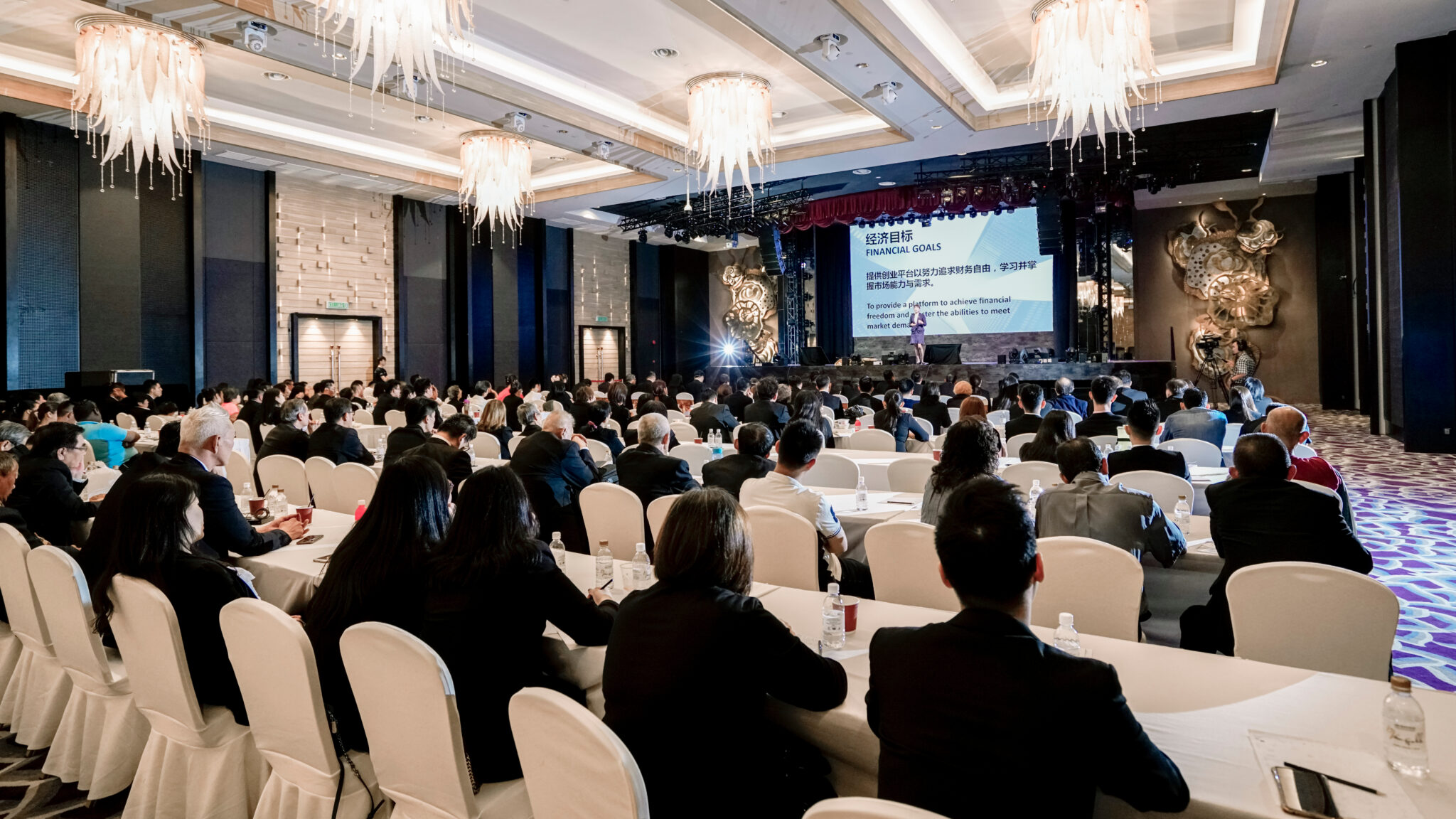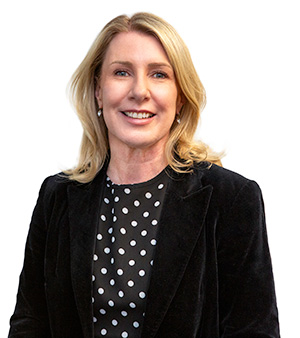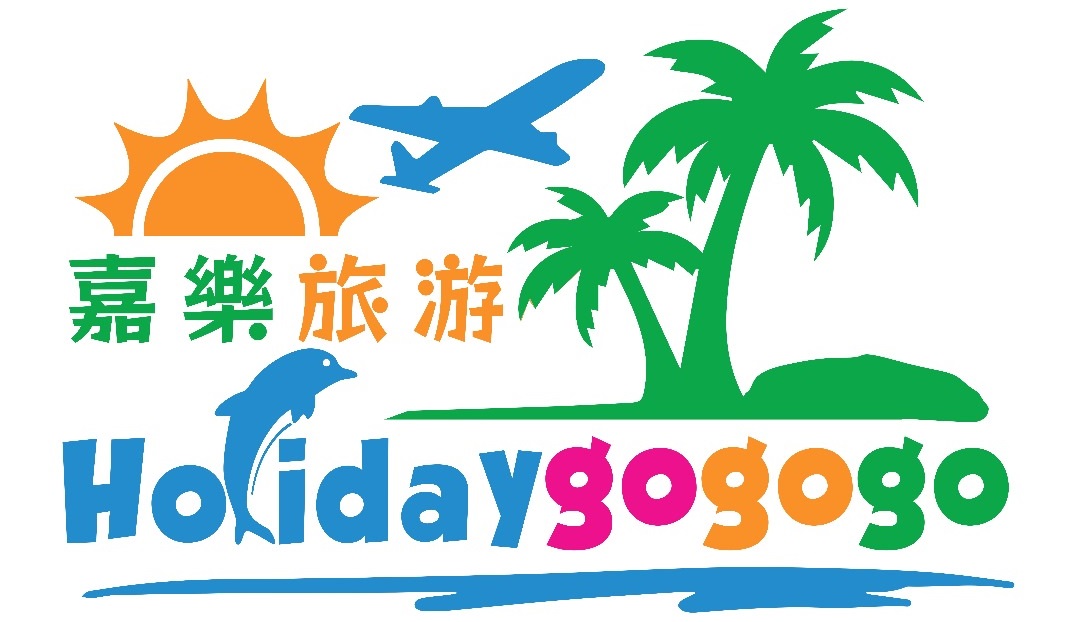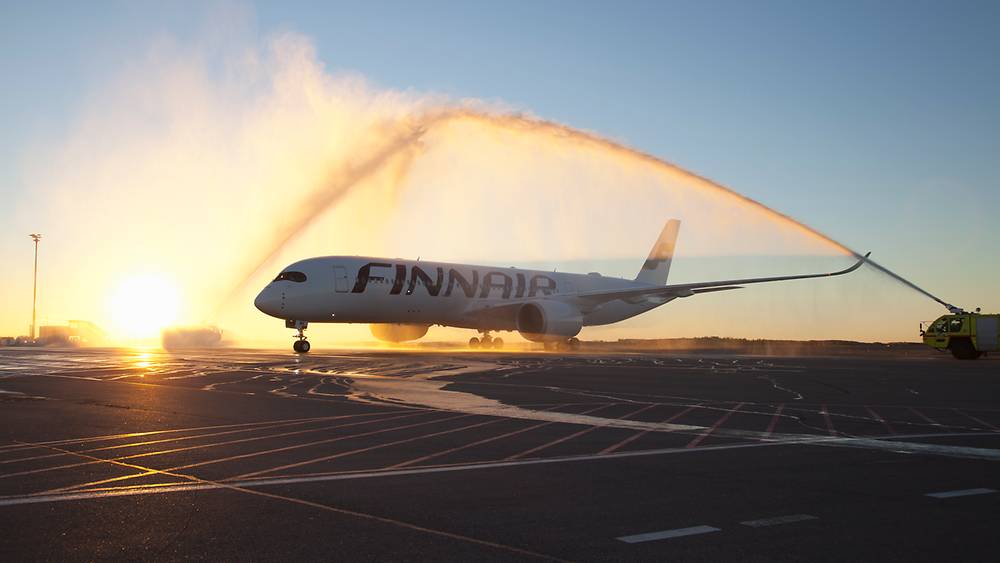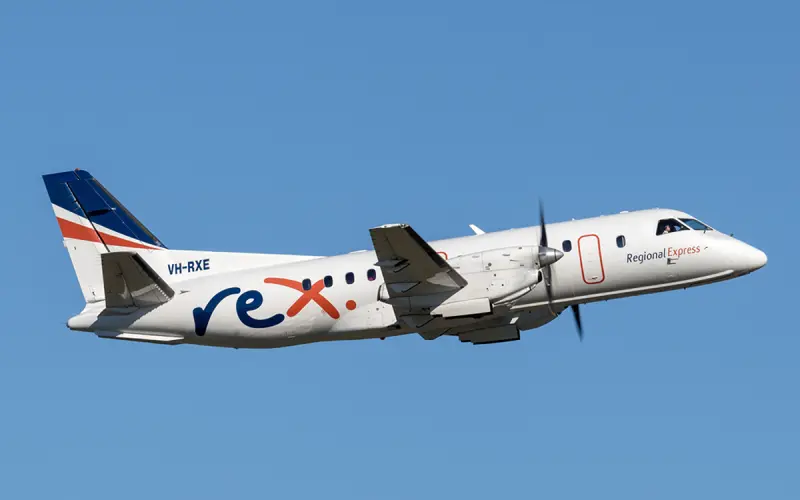This article was originally published as a blog post by AltexSoft. It is published here with permission.
A hotel jam-packed with people isn’t always a profitable hotel; the hallmark of a successful hospitality business is the revenue. Hotels employ various revenue management techniques and strategies aimed at increasing the bottom line.
Compared to airlines, revenue management in hotels evolves slowly. 71% of hotel businesses worldwide are looking for smarter and more efficient ways to do business, according to Global Hotel Business Index 2018.
Along with keeping guests happy and improving channel management, this is one of the three main challenges for today’s hospitality industry. In this article, we will define hotel revenue management, identify the facets that shape it, and look at the most effective revenue-increasing strategies.
What is hotel revenue management?
Robert G. Cross, the author of the book Revenue Management: Hard-Core Tactics for Market Domination defines revenue management as “the art and science of predicting real-time customer demand at the micromarket level and optimising the price and availability of product.”
Simply, revenue management means predicting consumer behavior to sell the product at an optimal price every day. Therefore, the definition of hotel revenue management is straightforward: selling the right room to the right client at the right moment at the right price on the right distribution channel with the best commission efficiency. Sometimes revenue management is called yield management, but these terms aren’t interchangeable.
Revenue management is defined by interconnected components, which are:
- Customer segmentation
- Demand forecasting
- Yield management
- Dynamic pricing
Customer segmentation
Customer segmentation is an important part of marketing and pricing because it allows a target message to be defined while identifying the most suitable price for different customer segments. The guests are segmented according to demographic criteria like age, gender, marital status, the trip’s purpose, spending habits, or interests. The status of a traveler, whether a new or returning guest, to a property, is also a segmentation criterion.
Demand forecasting
Demand forecasting is the analysis of information about past demand across all the customer segments. Based on historical data, you can predict when the demand will increase or decrease, and develop the right distribution strategy. This part of revenue management is especially important because it allows for setting prices, creating promotions to engage more guests, or launching other marketing activities to increase occupancy.
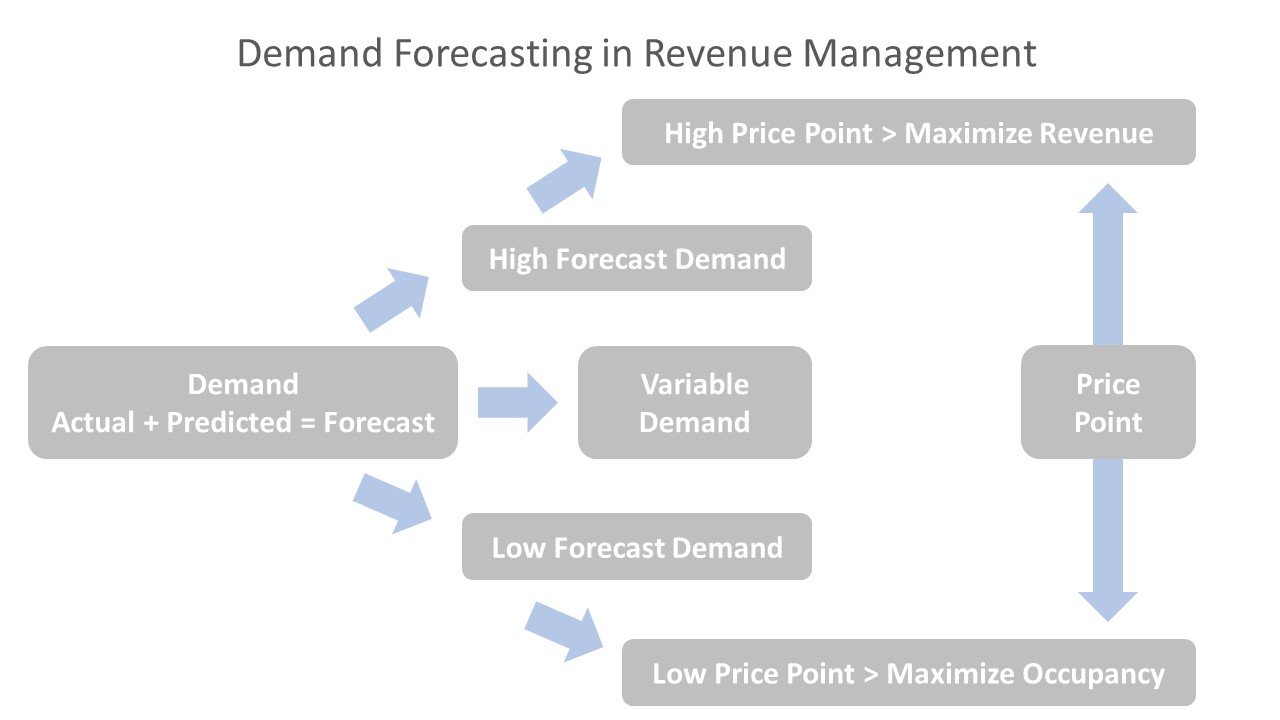
Yield management
The goal of yield management is to define the best price to sell products with maximum profit. This concept appeared much earlier than the concept of revenue management and is narrower. While revenue management is focused on the whole revenue of a business, including ancillary revenue and spendings, yield management focuses on the price and the volume of sales.
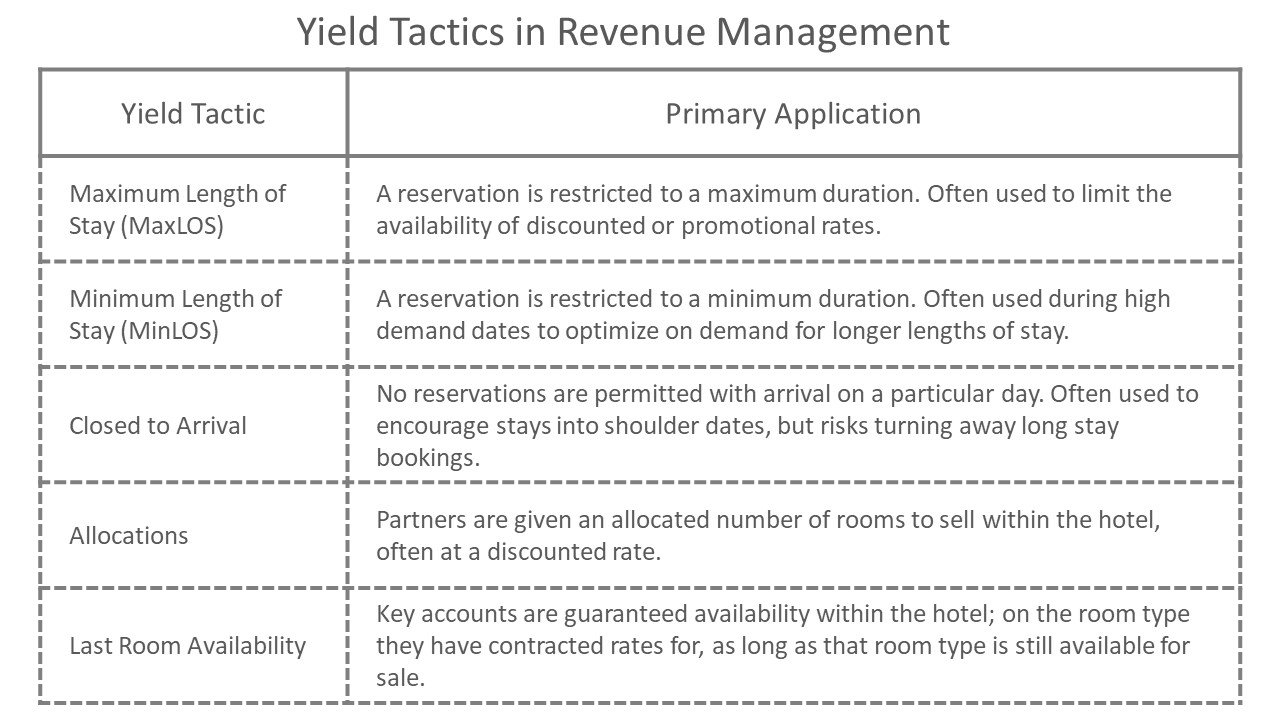
Dynamic pricing
Dynamic pricing is an approach that allows retailers to change the price according to market demand. Dynamic pricing strategies are built around selling the property for the best price possible. They are based on demand, supply, external, and internal data.
External data includes such data points as competitors’ prices, weather data, and booking patterns; while internal data includes segmentation, customer profiles, rates, etc. Dynamic pricing strategies allow hotels to keep up with the market and maximise occupancy rate, as well as the other hotel revenue management KPIs. The pricing strategies can be cost- or value-based, and customer- or competitor driven.
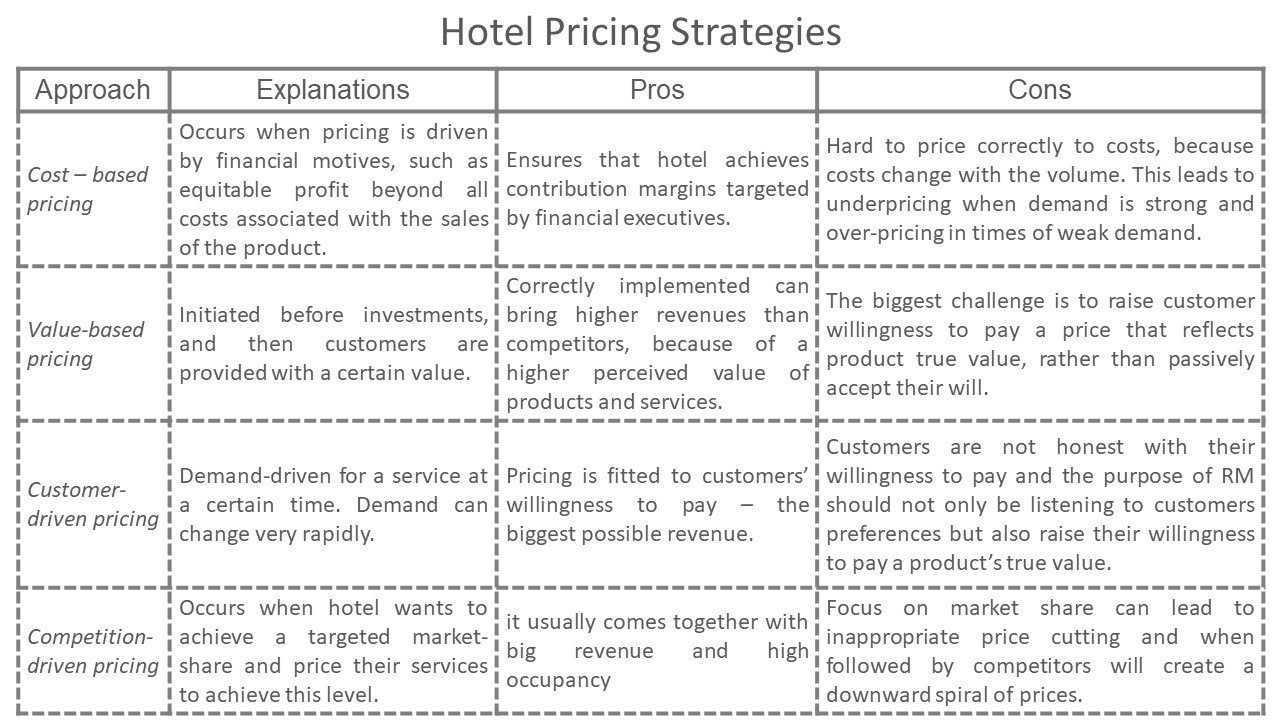
All those components influence revenue, and usually, a revenue manager is the person in charge. Let’s look closer at the revenue manager’s role and tasks.
Revenue manager: job description
A hotel revenue manager has a long list of responsibilities. First of all, he/she must cooperate with all hotel departments, especially sales and marketing teams to push the hotel business forward. The core spheres of a revenue manager’s interest include forecasting, pricing, inventory management, marketing, and distribution channel management. Let’s find out how revenue manager deals with them.
Forecasting is based on data and segmentation, the main pillars supporting revenue management. Predicting customer behavior enables a revenue manager to optimise revenue. The primary intelligence is derived from historical data on occupancy, room rates, previous revenue, and the current data on customer activity.
Pricing depends on market demand and customer desire to pay for a particular type of property. To set the price, a revenue manager analyzes the market, competitors’ prices, and their products. The prices are optimised according to different pricing strategies. They include demand-based pricing strategies, such as corporate pricing, packages, contract agreements, and dynamic pricing strategies.
Inventory management. In revenue management, the term inventory refers to the product (i.e. rooms) sold. A room is a perishable product. If a room is not occupied, a hotel loses money. The main task of a revenue manager is to make sure that all the rooms are occupied.
Marketing. The goal of any marketing activity is to increase the volume of sales. It uses the tools that allow a property to sell all the inventory by keeping customer flow steady and attracting new guests. This includes such marketing activities as promotions, discounts, and loyalty programs.
Distribution channel management. In revenue management, inventory must be sold to customers within specific segments. Channels are often closely tied to the customer segments that use them. Depending on the product type, a revenue manager can choose a channel and set prices for a particular segment of a target audience.
To achieve these goals, a revenue manager has to perform the following tasks:
- Market analysis and segmentation
- Competitor analysis
- Customer behavior analysis
- Historical and current data analysis
- Yield management
- Revenue performance forecasting
- Daily and monthly reporting
- KPI tracking
The last point is of special importance, because the KPIs define the success of the whole strategy.
KPIs in hotel revenue management
Traditionally, the effectiveness of revenue management strategy is measured using the following KPIs:
Occupancy rate – the number of occupied rental units at a given time, compared to the total number of available rental units at that time.
Occupancy rate = Rooms sold / Room available
Average daily rate (ADR) – this rate is applied to a room’s average rental income during a certain period of time. It’s compared to hotel’s historical ADR or competitors’ metrics.
ADR = Rooms revenue earned / Number of rooms sold
Revenue per available room (RevPAR) – a KPI that assess financial and business performance of a hotel. RevPAR measures ability of a property to fill all the rooms and define the best price for them. There are two ways to calculate it:
RevPAR = Rooms revenue / Rooms available
RevPAR = Average daily rate * Occupancy rate
Total revenue per available room (TRevPAR) – a metrics that accesses total revenue, generated by property and based on room cost and money spent on it. This KPI captures a snapshot of overall business performance. TRevPAR is one of the main benchmarking tools for big hotels and resorts. The higher the TRevPAR, – the better the revenue.
TRevPAR = Total revenue / Total number of available rooms
Net revenue per available room (NRevPAR) – a KPI that allows hotel revenue managers to calculate the distribution cost to see how the room revenue is generated. NRevPAR includes spendings on marketing and distribution.
NRevPAR = (Room revenue – distribution costs) / Number of available rooms
Gross operating profit per available room (GOPPAR) – measures the profit of a hotel and value of all assets at any given time. GOPPAR measures profit to capacity, including all a hotel’s spendings and taxes.
GOPPAR = Gross Operating Profit / Number of available rooms
A revenue manager’s task is to track these KPIs and develop a strategy to improve the metrics, making the hotel a successful business. A hotel revenue manager has to deal with multiple reports and data. Revenue management software can save time and resolve some issues. In the next section, we’ll look closer at some of those systems.
Revenue management software solutions
Typically, a revenue manager spends most of the time managing reports manually, rather than analyzing them and working on an effective pricing strategy. Automated revenue management software can facilitate everyday manual tasks that he/she performs.
Hotel revenue management software facilitates setting the best prices for hotel rooms, based on data and helps generate dynamic offers. Typical features are:
- Detecting the most profitable pricing options
- Demand forecasting
- Analysis of lost revenue due to overbooking or cancellations
- Revenue reports by KPIs
- Collection of historical inventory data
- Channel- and segment-based revenue analysis
- Day- or week-based performance analysis
The software can consist either of several modules or be oriented to particular revenue management tasks. Let’s look at the most popular tools.
Duetto – industry-leading software with modules for revenue management in hotels (BlockBuster), casinos (GameChanger), sales (PlayMaker), and reporting (ScoreBoard).
IDeaS – another popular automated solution for revenue management, pricing, forecasting, and reporting. IDeaS also offers products that track revenue of parking lots and function space.
TravelClick – offers iHotel suit with revenue management and channel management modules. iHotel also has media and web modules for driving direct bookings through an online presence.
Kepion – a revenue management platform with integrated planning and reporting features. And, the vendor offers additional solutions with an expanded business intelligence module.
RateBoard – a software that uniquely focuses on yield management and analysis. It analyses booking habits and the market to suggest prices for 365 days in advance.
RevPar Guru – software focused on tracking Occupancy, ADR, and RevPAR. Besides the revenue management system, RevPar Guru has a channel management module and a booking engine.
ResNexus – a yield management solution with front desk, CRM, reservation manager, housekeeping integrations, and reporting.
On top of that, some hotel property management systems like Maestro, Oracle PMS, or IQware have integrated revenue management modules.
The application of automated hotel revenue management systems is one possible strategy to increase revenue. In the following section of the article, we will go into more details on the most effective strategies at work in the hospitality industry today.
Best practices in hotel revenue management
Although hotel revenue management doesn’t evolve fast, strategies aimed at improving it develop in tandem with modern business and technological trends. Here are some practices that hotels use to improve the revenue.
1. Shift to profit management
For a long time Occupancy rate, ADR, RevPAR, and NRevPAR were the most important KPIs in hotel revenue management. They measured business success and were compared to the same metrics of competitors, but today’s paradigm is different.
Hotel revenue management is moving towards strategic profit management, as confirmed by a 2017 study Total Hotel Revenue Management: A Strategic Profit Perspective. This means that the KPIs will focus mostly on GOPPAR (gross operating profit per room) and TRevPAR (total revenue per room).
Another 2017 study, conducted by Sheryl E. Kimes of Cornell University School of Hotel Administration The Future of Hotel Revenue Management, reveals that GOPPAR and TRevPAR are indicated as the most important benchmarks with 33.7 and 17.5% of respondents supporting this idea. The research participants were 400 revenue management professionals. RevPAR (revenue per room) remains an important KPI for hotel revenue management, but its relevance is declining.
Compared to the other KPIs, GOPPAR and TRevPAR draw a broader picture of business performance. This means that a revenue manager focuses not just on a single parameter that relates to the occupancy, but the value of a room in the global economic prospects of a hotel. Another significant metric is NRevPAR (net revenue per room), because it allows revenue managers to account for expenses in their calculations.
2. Using data analysis and predictive analytics
Data is the foundation for effective business operations. Currently, data science and predictive analytics are trending in many business areas, the hospitality industry being one of them. By analyzing historical data on cancellation rates and denials, you can predict occupancy rate levels and room rates, based on past booking calendars. Deep analysis of customer behavior allows for personalising the offers for different customer segments across distribution channels.
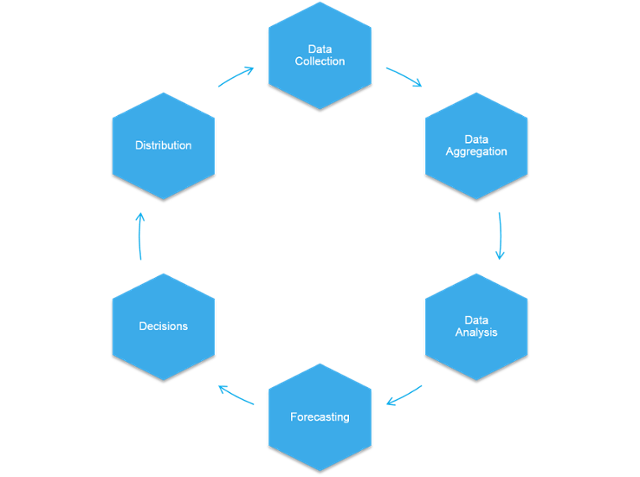
Today hotel revenue managers shift from relying on general historical trends to current data that captures guest online activities, like shopping behavior analysis, cancellations and no-shows, booking patterns, and more. Such data allows hotels to improve marketing and dynamic pricing strategies. Grounding on this data, you can use predictive analytics in pricing strategies. During the last few years, some hotel giants like Marriott International have been creating analytics divisions that use existing data for further development of data-based pricing models.
In 2013, El Cortez Hotel & Casino started using Duetto revenue management software to track shopping behavior. Based on predictive analytics data, they took away discounts on some unnecessary positions, changed their pricing policy by decreasing midweek rates, and increasing rates on weekends or during some events.
Also, the hotel changed their policy for the casino segment by identifying the most valuable players and offering them additional services. As a result, they achieved a 30% increase in cash revenue, a 10% increase in ADR (average daily rate), and a 109% increase in direct room nights. The occupancy rate grew by 4.5%.
3. Channel and overbooking management
Revenue highly depends on the channels that guests use for booking. Channel management influences revenue management, preventing overbooking and managing customer bookings sources. Channel management software, like SiteMinder, AxisRooms, or ChannelRUSH, refreshes information about the available rooms, updating it across all the channels (OTAs and metasearch engines), and avoiding double bookings. But there are situations when overbooking can benefit the revenue of a hotel. Let’s see how.
A revenue manager must analyze daily statistics by channel to understand where the bookings come from and watch the sources of double bookings to close sales on these channels. Sometimes a couple of overbookings won’t matter if a cancellation is predicted. In case there isn’t a cancellation, a hotel can either send a guest to another hotel, provide compensation, or offer a future discount, which costs much less than a room without a guest.
Selling slightly more inventory than is actually available can be a good revenue management strategy. For instance, it’s widely applied by US airlines. Cancellations and no-shows, which always happen, lead to empty rooms. Overbooking strategy can maximise total capacity and increase revenue. In case of no-shows or cancellations, a hotel manager still can fill a previously booked room.
Based on historical data of cancellations and no-shows, a revenue manager in cooperation with a front desk can distribute more property in a certain period of time to avoid unoccupied rooms.
4. Driving direct bookings
Before booking a room, travelers visit one to five websites, the 2017 Fuel Travel Behavior Study Report shows. Bookings that come from a direct channel increase RevPAR, remaining an effective distribution channel. At the same time, OTAs are growing more popular, making hotels visible to a larger number of travelers worldwide – for instance, in the United States OTAs had 39% of the digital travel market in 2017. But there is something that makes it less great: rate parity.
A legal agreement obliges a hotel to keep prices the same across all distribution channels. It means that regardless of the channel a person uses to book, via an OTA or directly at a hotel, it makes no difference to him/her because this traveler gets the room for the same price. But it does make a difference to the hotel by forcing it to pay a commission to an OTA.
Decreased spendings on OTA commissions allows for maximising revenue, but here is the problem: how to encourage the travelers to book directly? First, by offering comps like free Wi-Fi, breakfast, or a discount for a direct booking.
Second, you can improve your website. In an increasingly competitive hospitality industry, a hotel website must be user-friendly, as well as optimised for search engines and mobile channels. That is how travelers will find your property faster if they are looking for a room in your area. Current trends in driving direct traffic are SEM and SEO optimisation.
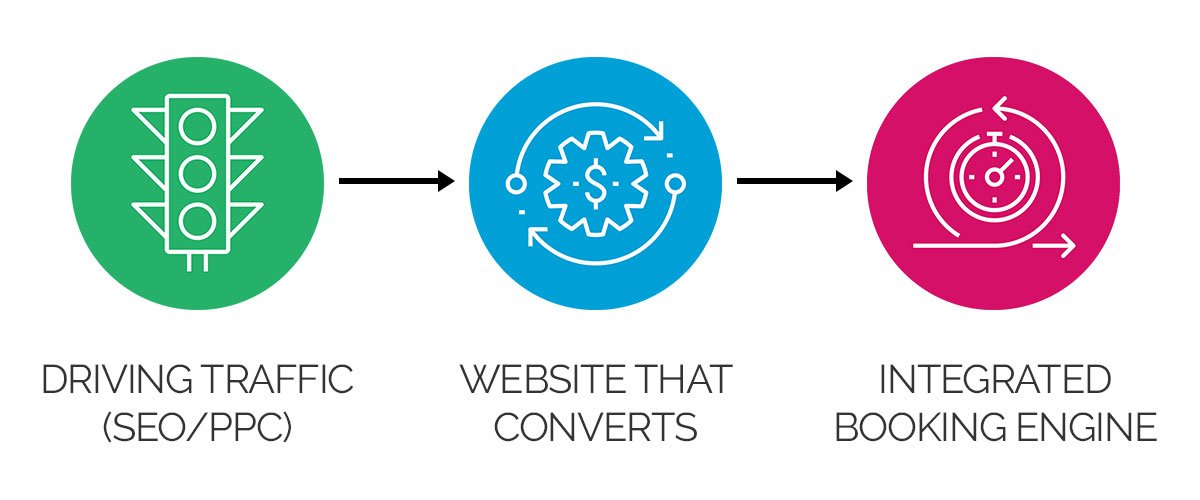
You can learn more about driving direct bookings back to your website in our article. And third, make online-bookings easier for them.
5. Mobile-driven booking
Today over one third of travelers book hotels online via their smartphones or tablets. So, once you have a website, make it mobile responsive for this category of customers. The three main elements of a mobile responsive website are: enhanced UX, a shorter reservation form, with only critical fields, and a secure mobile payment system.
Another way to give the users opportunity to book online is an app. International chains like Hilton, Marriott, and Hyatt have their own iOS and Android apps, where users can book and pay online.
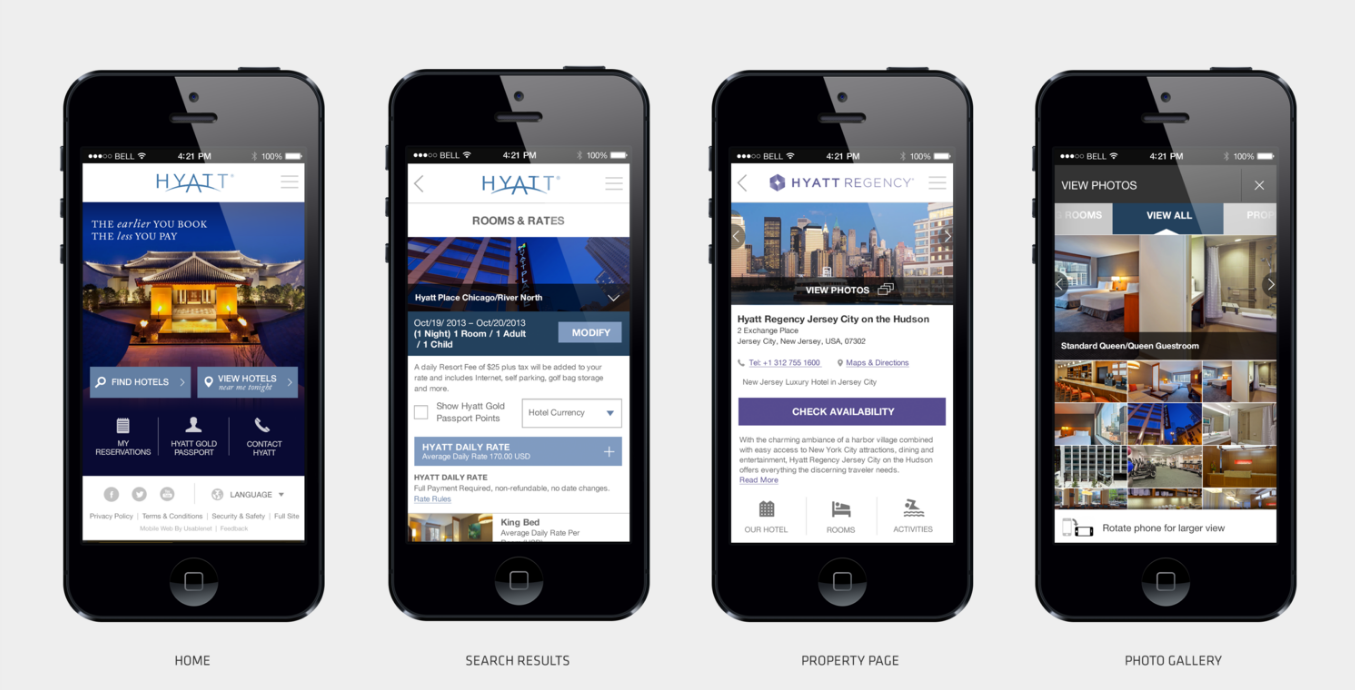
A successful mobile app for a hotel is a great opportunity to cross-sell hotel services and make a guest’s stay more comfortable with online check-ins and virtual concierges. And if you add an opportunity to earn points through a customer loyalty program, the chances that a traveler will choose your hotel again increase.
6. Using AI and chatbots
Artificial intelligence and data science in the hospitality industry is not just trending, it’s also impacting revenue. A chatbot on a website or within an app can answer common questions, upsell or cross-sell additional services 24/7, interacting with a customer in a natural conversation manner. A chatbot on social networks, like a hotel’s Facebook group, can serve as an additional sales channel.
Chatbots can answer travelers’ questions about a property, services, facilities – redirecting more complicated requests to humans – and collect information about the target audience, e.g. customer preferences and the purpose of a trip. To learn more about chatbots in the travel industry, check out our related article.
7. Generating ancillary revenue
In the hospitality industry, the term ancillary revenue refers to the revenue gained from sources other than the primary product offering, the rooms. These sources include food and beverage services, transportation, entertainment, spa and wellness, or miscellaneous services such as extra beds, flower delivery.
Several types of sources can be packaged and offered to a particular customer segment, like business, leisure, bleisure, family, or group travelers. Additional services are in high demand by business travelers of all age groups; while packages are more popular with leisure travelers.
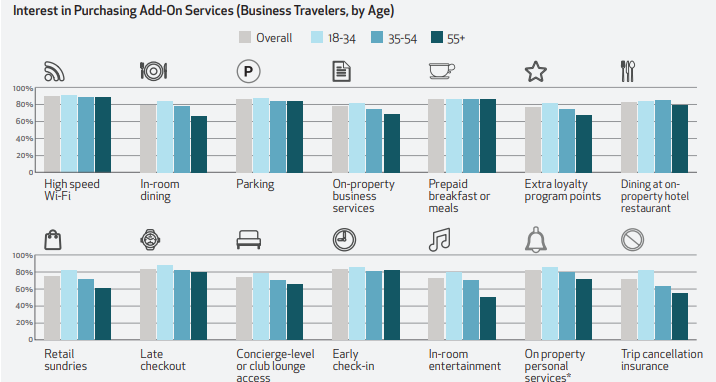
Ancillary revenue influences GOPPAR, so a hotel that offers packages will be much more profitable than one that doesn’t. There are internal and external packages. An internal package consists only of the items, produced, controlled, and offered by a hotel, for example, a wellness package that includes airport pick up, spa-service in a hotel, access to a gym, and a dinner at the hotel restaurant.
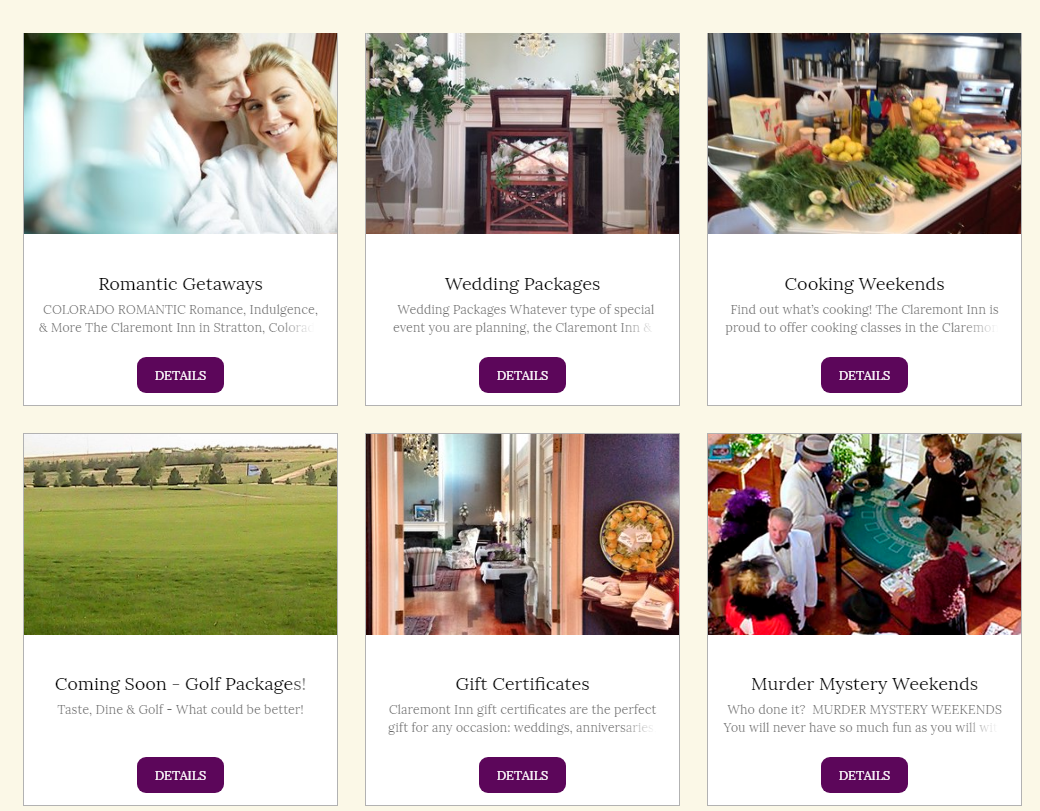
An external package entails offering third-party products and services, like car rental, transportation, or coupons/vouchers. For instance, travelers can book rooms with an airport-hotel transfer from a single interface; while a hotel receives a commission from the transfer partner. We’ve described how to include airport transfers in a booking engine in a related article. A hotel can choose a third party for cooperation, or leverage a dynamic packaging platform, which is another revenue-increasing strategy.
8. Dynamic packaging
Dynamic packaging is a strategy that allows travelers to customise their trip by adding necessary services through dynamic packaging engines. This method allows travelers to book from multiple sources using a single online application. People find this way more flexible and customisable than ordering any ready-made tours or trips or booking everything manually.
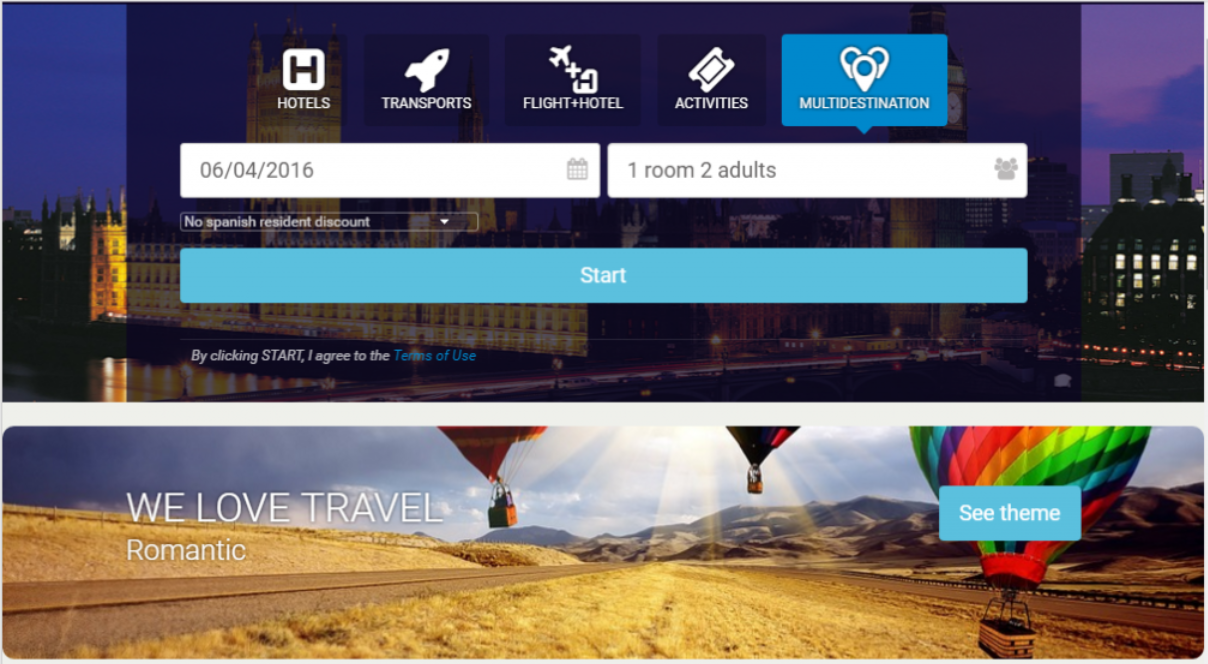

9. Launching loyalty programs
Loyal customers are an indispensable part of an increasing revenue. So, various loyalty programs for existing guests help retain people who already used your services. You can create targeted email campaigns, offering special discounts.
Also, discounts can attract people who don’t know whether they should stay in a given hotel or not. For instance, with segment-based discounts for participants at a festival that takes place in your area, you can attract more guests.
Loyalty programs can be launched independently, or a hotel can join a network loyalty program like Stash Hotel Rewards or IHG. Depending on the hotel, guests can earn points for direct bookings or even passing on housekeeping. Then they can use earned points on other services or hotel stays. Such activities not only allow hotels to win a guest’s trust, but also increase revenue: According to Cornell University’s School of Hotel Administration study, hotels that joined Stash Hotel Rewards experienced an almost 50% increase in annual room-nights for each guest and a 57% revenue gain per year.
To sum up: steps to increase a hotel’s revenue
Hotel revenue management develops slowly and still leaves much to be desired. The main tasks are performed by a revenue manager, who deals with loads of data. A revenue manager must make the final decisions to create a job that’s more efficient and less stressful, but it requires effort from the whole team. To elevate a hotel’s revenue, consider taking the following steps:
- Create or engage with a data science team to focus on predictive analytics input
- Ensure collaboration across all departments
- Use a revenue management software or a PMS with an integrated revenue management module
- Increase ancillary revenue by selling additional services
- Manage sales channels
- Adapt to current digital trends
- Provide some perks to returning guests and those who book directly

x Studio



Connect with your clients by working with our in-house brand studio, using our expertise and media reach to help you create and craft your message in video and podcast, native content and whitepapers, webinars and event formats
- Related Articles
- View all
Best thread forward – How Westin’s Project Rise helps kids all around the world
Just in time for World Sleep Day comes Project Rise: ThreadForward - a sustainability program that collects and reweaves hotel bed linens into thousands of pairs of children’s pyjamas.Top 10 must visit tourist destinations in Britain, according to Instagram
The Lake District is officially Britain’s most Instagrammable tourist attraction, a new study has shown. The study, conducted by caravan insurance experts InsureMy, analysed hashtags on Instagram to establish the most famous destinations and attractions in Britain.“A world of difference”: Siteminder books 100 million guests in 2019
Hospitality guest acquisition specialist SiteMinder, has announced the delivery of its 100 millionth online hotel booking of 2019 — marking the first time a cloud-based platform has processed more than 100 million hotel bookings in a calendar year. The booking for a one-night stay at Hotel Chelsea in Köln, Germany, ...- Industry Appointments
- Travel Guide
- Resource Center
- View all
- Transform and Modernise with an Effective Hybrid Cloud Strategy
- Transform and Modernise with an Effective Hybrid Cloud Strategy
- Transform and Modernise with an Effective Hybrid Cloud Strategy
- Transform and Modernise with an Effective Hybrid Cloud Strategy
- Industry Events
- Inspiring Stories
Hotel revenue management: Solutions, best practices and revenue managers’ roles
Altexsoft Team
- December 24, 2018

x Studio



- Related Articles
- View all



 share
share













